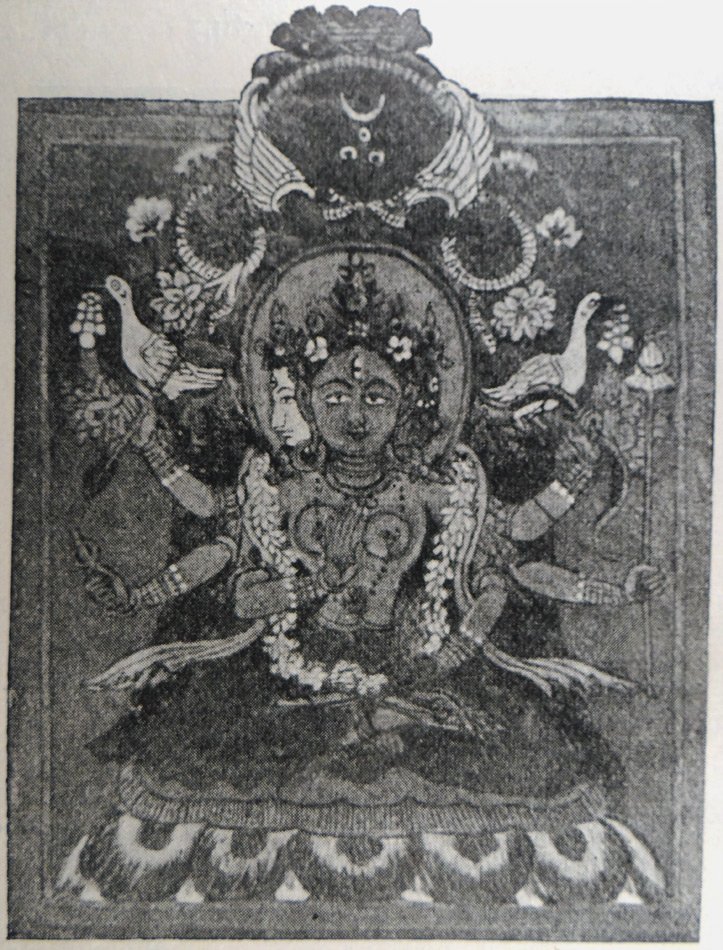The Indian Buddhist Iconography
by Benoytosh Bhattachacharyya | 1958 | 51,392 words | ISBN-10: 8173053138 | ISBN-13: 9788173053139
This page contains an iconography image of Five Protectresses (4): Mahashitavati and represents figure 199 of the book Indian Buddhist Iconography, based on extracts of the Sadhanamala English translation. These plates and illustrations represent either photographs of sculptures or line-drawing reproductions of paintings or other representations of Buddhist artwork.
Figure 199 - Five Protectresses (4): Mahāśītavatī

Fig. 199: Mahāśītavatī
Introduction: The five protectresses [viz., Mahāśītavatī] or the Rakṣā deities as they are called in Tantric works, are popular and well-known amongst the Mahāyāna Buddhists, particularly of Nepal. A manuscript copy of the Pañcarakṣā describing the five Rakṣā deities, their worship on different occasions and their powers, is to be found in almost every Buddhist household in Nepal. [...] The reason why the five Rakṣā deities are popular is to be found in the Sādhanamālā. According to this authority the five Rakṣā deities [viz., Mahāśītavatī], when worshipped, grant long life. They protect kingdoms, villages and meadows. They protect men from evil spirits, diseases and famines, and from all possible dangers that may befall mankind. [...] All the five deities are worshipped either singly or collectively in a Maṇḍala.
4. Mahāśītavatī:
Colour: red;
Faces: three;
Arms: eight;
Symbol: lotus.
The fourth deity in the series of five Rakṣā goddesses is named as Mahāśītavatī to whom the western direction is assigned. Her form is described in the Niṣpannayogāvalī thus:
“In the West on the orb of the sun on a double lotus there is Mahāśītavatī sitting in the Ardhaparyaṅka attitude with the halo of of the sun. She is red in colour, and her faces show the red, the white and the blue colour in the first, the right and the left faces respectively. She is eight-armed. In the four right hands she displays 1. the lotus with the Abhaya-mudrā, 2. the arrow, 3. the Vajra and 4. the sword. In the four left hands she shows 1. the noose with the Tarjanī, 2. the bow, 3. the jewel banner and 4. the manuscript against the chest”.
In the Sādhanamālā she is six-armed and green in colour. She is widely represented in Buddhist countries. Under the title of Śītavatī she is known to the Chinese collection at Peiping. Fig. 199 is an illustration of her miniature in the collection of Dr. Evans Wentz.
